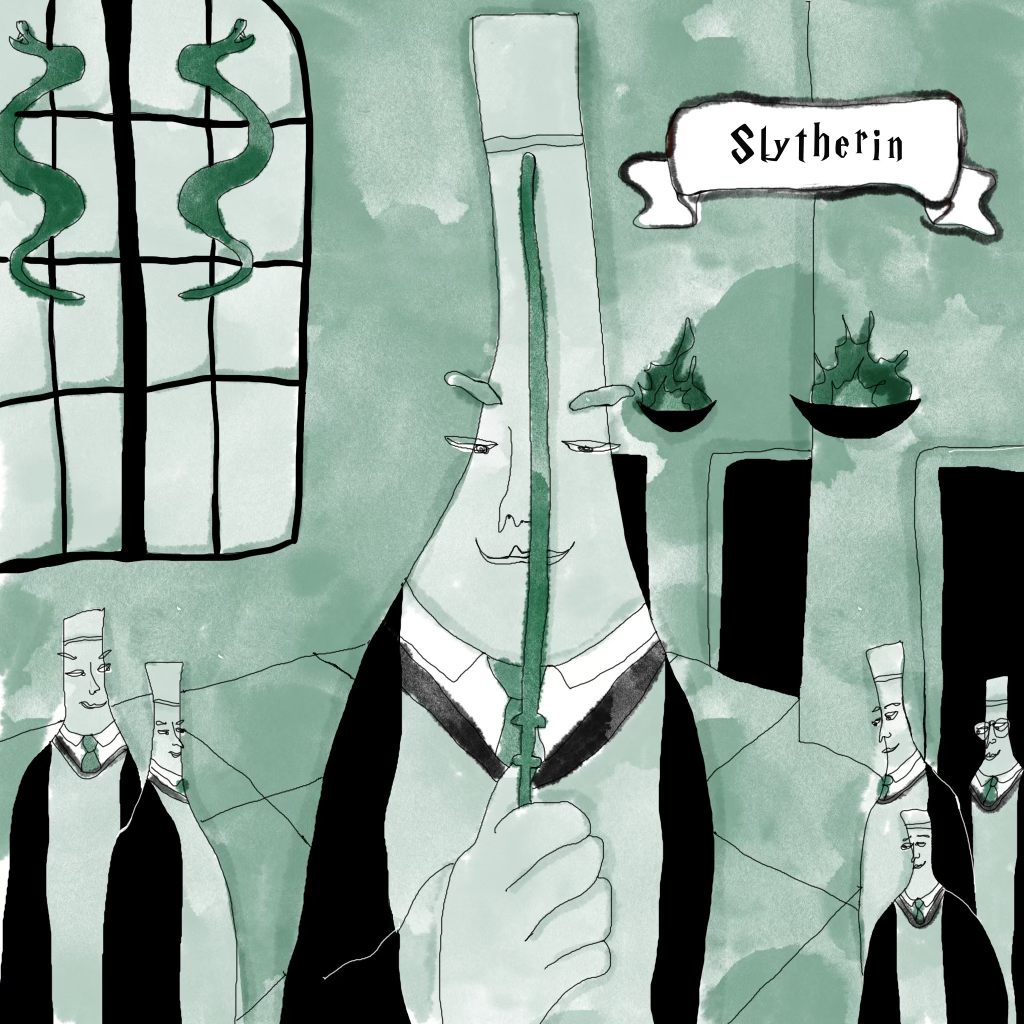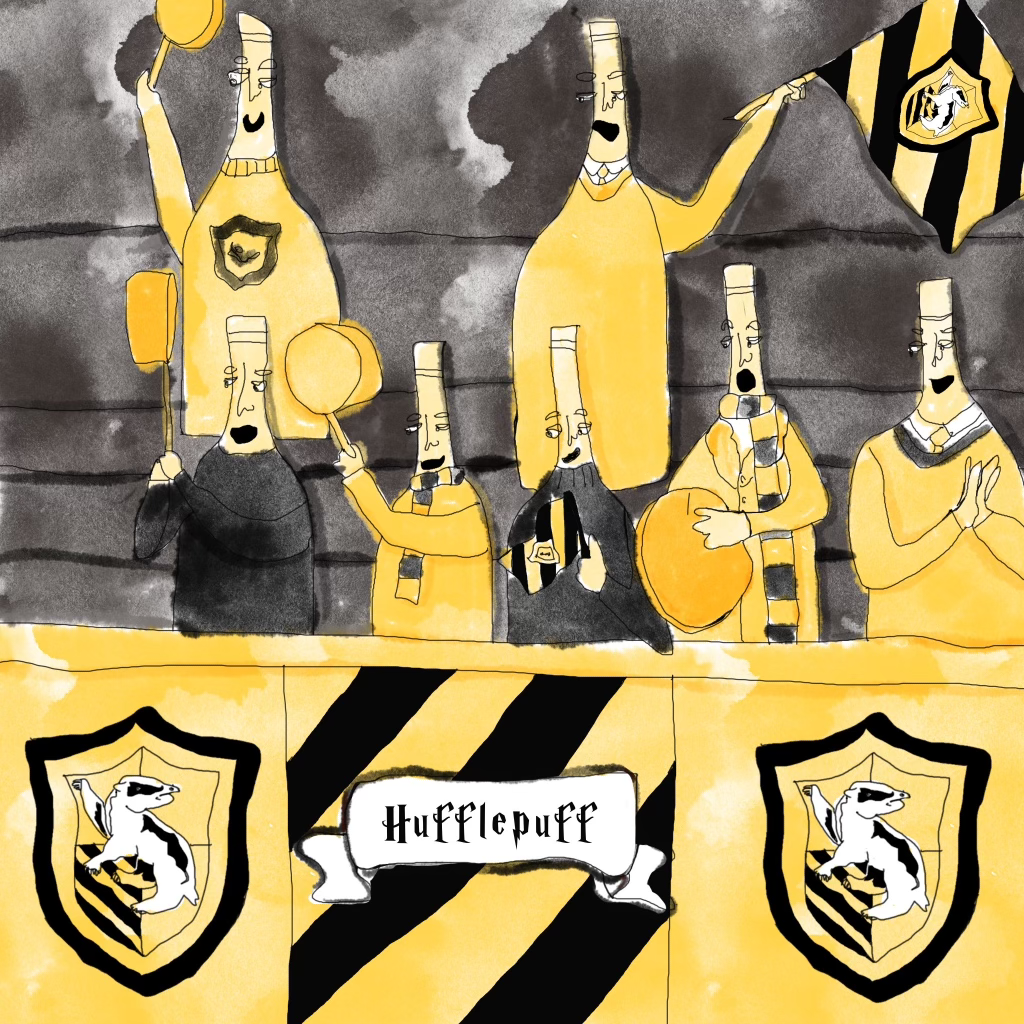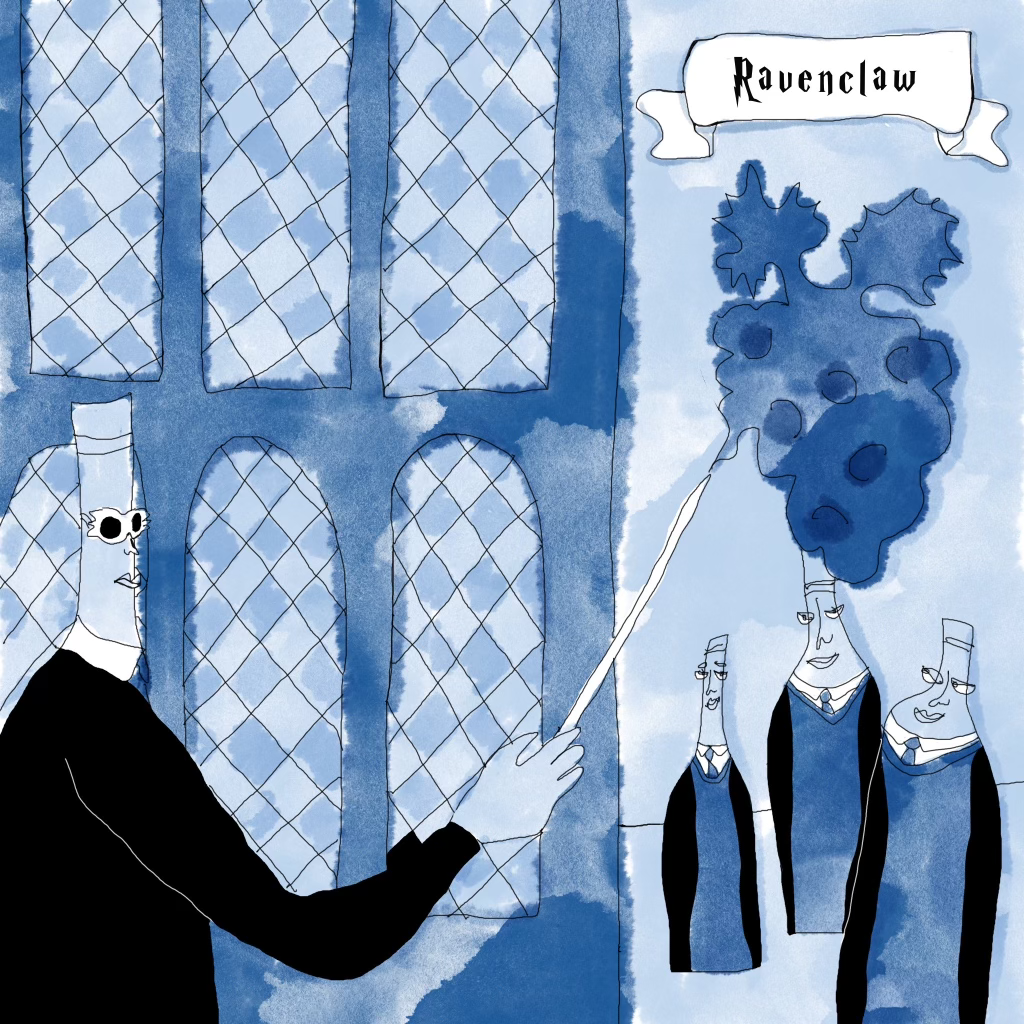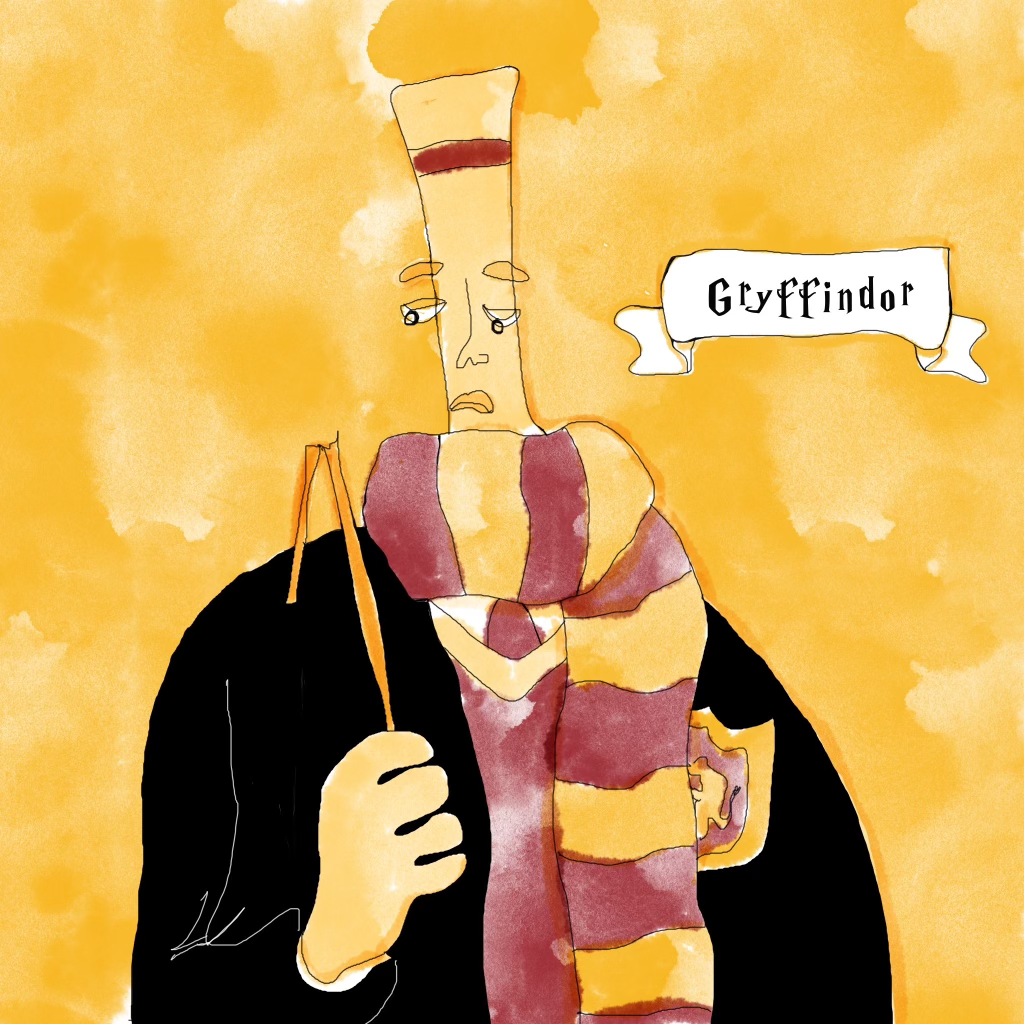If Grape Varietals Were Hogwarts Houses, Which Would They Be?
Written by Eliza Dumais, Illustrated by Cerise Zelenetz
There’s a certain obsessive quality shared amongst Wine People — and frankly, it’s not unlike the fanaticism that Harry Potter reliably breeds. Sure, there are light touch enthusiasts in both realms, but it’s altogether more likely that you’ll meet folks who have upended their lives to stomp grapes and stalk wine auctions…or, who formerly donned Hogwarts robes to stand in line outside of a suburban Barnes & Noble. And while we have no numerical data as to the causal relationship between Harry Potter loyalists and wine industry insiders, we can attest to the legitimacy of the correlation. Plus, both constituents share a slogan (I solemnly swear I am up to no good).
So, in salute to the community of devotees living at the center of the Harry Potter/Wine World venn diagram, we give you: Grape varietals as Hogwarts houses, as determined by our sorting hat (Eliza Dumais).
Slytherin: Sylvaner
Yes, the two nouns share a significant number of consonants (not to mention the alliteration) — but more importantly, sylvaner is obviously the meanest of all grape varietals. The stuff is high-acid (think venomous and serpentine) with a bitter, chlorophyll finish. It’s got some deceiving aromatics, designed to lure you in (orange blossom, white flowers, peach) but on the palate, the stuff can be cutting, flinty, and razor sharp (Parsel tongue, embodied).
Hufflepuff: Viognier
Fine, I’ll say it: Hufflepuff is the most forgettable house…and Viognier is the most forgettable grape. Even as an avid (unabashed) Harry Potter evangelist, I’m not actually sure what Hufflepuff is known for — other than not being the smart house, or the brave house, or even the cool, evil house. And Viognier, too, often finds itself blended into other grapes so as to enhance aromatics, bring out floral notes, and soften the edges on tannins. Sure, it can be peachy with kicks of tangerine…but it can also merely serve to dilute or temper the intensity of other varietals. Which is to say, it’s basically just a character foil.
Ravenclaw: Pineau d'Aunis
Ravenclaw, much like Pineau D’Aunis, deserves far more recognition than it has historically received. Neither is niche, per say…just underappreciated. While famously the most intelligent of all the Hogwarts houses, Ravenclaws are known for their creativity, intellect, and astounding wit (arguably the most favorable human characteristics). And Pineau D’Aunis, while beloved (and delicious) feels comparatively underlauded. The red grape, largely grown in the Loire Valley, has a texture that can resemble Beaujolais or Poulsard. And while it generally skews on the lighter side (it’s a chillable red, folks!) you’ll also get dark berry and citrus notes, with a touch of fun, rocky minerality.
Gryffindor: Muscat
Both Gryffindor and Muscat are decidedly on the nose (it’s embarrassing, really). Once you’ve surpassed the age of 14, it’s no longer charming to fancy yourself a Gryffindor. In fact, it’s vaguely tacky and unoriginal (courage is an overrated trait IMHO). Yes, the Potter protagonists certainly do good work to romanticize the house, and the Weasley clan is clearly a hell of a good time…but nonetheless Gryffindor is a touch played out. Muscat, while less overdone, is often more nose than palate. It’s a fundamentally aromatic, perfumey grape: You’ll smell honey, lychee, lemongrass, jasmine. Moreover, there are countless grapes within the Muscat family (Zibbibo, Moscato, etc) so you’ll find range (a la Gryffindor).





